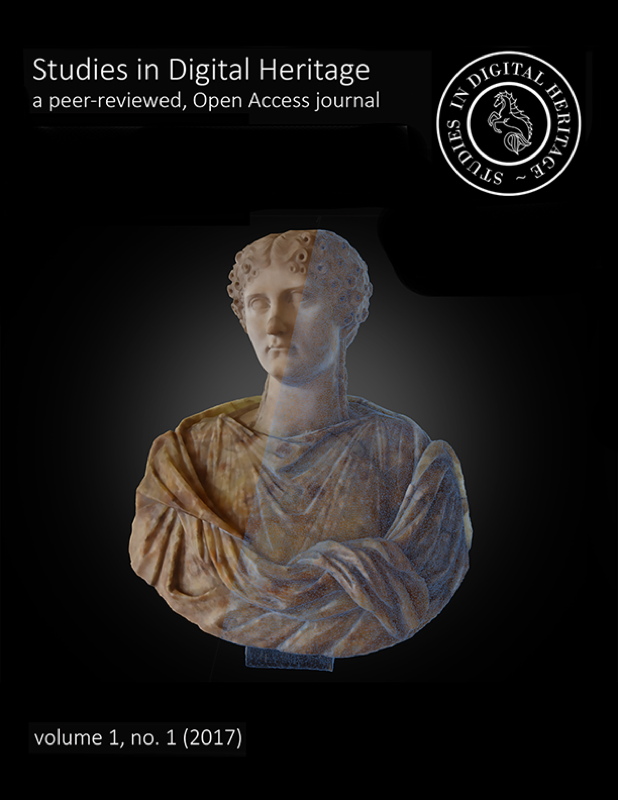Archaeoastronomy in the Khmer Heartland
Main Article Content
Abstract
The heartland of the Khmer empire is literally crowded with magnificent monuments built in the course of many centuries. These monuments include the world-famous "state-temples", such as Angkor Wat, but also many other temples and huge water reservoirs. Using data from Google Earth as well as GIS and reconstructing the ancient sky with Stellarium, we investigate the relationships of astronomy with orientation and topography in a systematic fashion, following the methods of modern Archaeoastronomy and strictly keeping at bay vague and/or esoteric proposals put forward by many authors in the past. As a result, a very clear pattern of cardinal orientation and alignment arises, connected with the temple's symbolism and the management of power by the Khmer kings. As a bonus, the comparison with the Angkor monuments allows to put forward a explanation for the anomalous orientation of two unique "peripheral" state temples of Cambodia.
Downloads
Article Details

This work is licensed under a Creative Commons Attribution-NonCommercial 4.0 International License.
From 18 May 2018, the contents of Studies in Digital Heritage are licensed under a Creative Commons Attribution-NonCommercial 4.0 International License (CC BY-NC 4.0). Our submitting authors pay no fee and retain the copyright to their own work.
How this works: to submit their work to the journal, authors grant Studies in Digital Heritage a nonexclusive license to distribute the work according to a CC BY-NC 4.0 license. Once an article is published, anyone is free to share and adapt its contents—provided only that they do so for noncommercial purposes and properly attribute the shared or adapted information. Details of these terms can be found on the Creative Commons website.
Download SDH’s full author agreement here
Studies in Digital Heritage will insert the following note at the end of any work published in the journal:
© [Year] by the authors. This article is an open-access article distributed under the terms and conditions of the Creative Commons Attribution License CC BY-NC 4.0 (https://creativecommons.org/licenses/by-nc/4.0/).
References
Anthony F. Aveni and Horst Hartung. 1988. Archaeoastronomy and Dynastic History at Tikal. In Anthony F. Aveni, ed. New Directions in American Archaeoastronomy. Oxford: BAR International Series 454, 1–11.
Edwin Barnhart and Christopher Powell. 2013. The Importance of Zenith Passage at Angkor, Cambodia. (2013). Retrieved January 20, 2017 from http://mayaexploration.com/pdf/angkorzenithpassage.pdf
Damian Evans and Roland Fletcher. 2015. The Landscape of Angkor Wat Redefined. Antiquity 89, 348 (2015), 1402–1419. DOI:http://dx.doi.org/10.15184/aqy.2015.157
Roland Fletcher, Damian Evans, Christophe Pottier, and Chhay Rachna. 2015. Angkor Wat: an introduction. Antiquity 89, 348 (2015), 1388–1401. DOI:http://dx.doi.org/10.15184/aqy.2015.178
Mitch Hendrickson. 2010. Historic Routes to Angkor: Development of the Khmer Road System (ninth to thirteenth centuries AD) in Mainland Southeast Asia. Antiquity 84, 324 (2010), 480–496. DOI:http://dx.doi.org/10.1017/S0003598X00066722
Mitch Hendrickson and Damian Evans. 2015. Reimagining the City of Fire and Iron: A Landscape Archaeology of the Angkor-Period Industrial Complex of Preah Khan of Kompong Svay, Cambodia (ca. 9th to 13th centuries A.D.). J. F. Archaeol. 40, 6 (November 2015), 644–664. DOI:http://dx.doi.org/10.1080/00934690.2015.1105034
Claude Jacques and Philippe Lafond. 2004. L’Empire Khmer. Cités et sanctuaires Vth-XIIIth siècles, Paris: Fayard.
Subhash Kak. 1999. The Solar Numbers in Angkor Wat. Indian J. Hist. Sci. 34 (November 1999), 117–126.
Subhash Kak. 2002. Time, Space, and Astronomy in Angkor Wat. (2002). Retrieved January 20, 2017 from http://www.ece.lsu.edu/kak/ang3.pdf
Giulio Magli. 2016. Archaeoastronomy: Introduction to the Science of Stars and Stones, Cham, ZG, Switzerland: Springer International Publishing.
Giulio Magli. 2013. Architecture, Astronomy and Sacred Landscape in Ancient Egypt, New York, NY, USA: Cambridge University Press.
Giulio Magli. 2010. Topography, Astronomy and Dynastic History in the Alignments of the Pyramid Fields of the Old Kingdom. Mediterr. Archaeol. Archaeom. 10, 2 (March 2010), 59–74.
John McKim Malville. 2000. The Cosmic Geometries of Vijayanagara. In John McKim Malville & Lalit M. Gujral, eds. Ancient Cities, Sacred Skies: Cosmic Geometries and City Planning in Ancient India. New Delhi: Indira Gandhi National Center for the Arts and Aryan Books International, 100–118.
Eleanor Mannikka. 1996. Angkor Wat: Time, Space, and Kingship, Honolulu, HI, USA: University of Hawaii Press.
Henri Mauger. 1939. Práh Khẵn de Kốmpon Svày. Bull. Ec. Fr. Extr. Orient. (1939), 197–220. DOI:http://dx.doi.org/10.3406/befeo.1939.3722
Pierre Paris. 1941. V. L’importance rituelle du Nord-Est et ses applications en Indochine. Bull. Ec. Fr. Extr. Orient. (1941), 303–334.
Michel Petrotchenko. 2012. Focusing on the Angkor Temples: The Guidebook 2nd ed., Michel Petrotchenko.
David Potere. 2008. Horizontal Positional Accuracy of Google Earth’s High-Resolution Imagery Archive. Sensors 8, 12 (2008), 7973-7981. DOI:http://dx.doi.org/10.3390/s8127973
Clive L.N. Ruggles ed. 2015. Handbook of Archaeoastronomy and Ethnoastronomy, New York, NY, USA: Springer-Verlag.
Miriam T. Stark, Damian Evans, Chhay Rachna, Heng Piphal, and Alison Carter. 2015. Residential Patterning at Angkor Wat. Antiquity 89, 348 (2015), 1439–1455. DOI:http://dx.doi.org/10.15184/aqy.2015.159
Robert Stencel, Fred Gifford, and Eleanor Morón. 1976. Astronomy and Cosmology at Angkor Wat. Science 193, 4250 (July 1976), 281–7. DOI:http://dx.doi.org/10.1126/science.193.4250.281
Etsuo Uchida, Kojiro Tsuda, and Ichita Shimoda. 2014. Construction Sequence of the Koh Ker Monuments in Cambodia Deduced from the Chemical Composition and Magnetic Susceptibility of its Laterites. Herit. Sci. 2, 1 (2014), 10. DOI:http://dx.doi.org/10.1186/2050-7445-2-10


